Films with theme "Films about Tibet", sorted by revenue
 , 1h20
, 1h20Directed by Ritu Sarin, Tenzing Sonam
Origin Inde
Genres Documentary
Themes Films about writers, Films about religion, Films about Tibet, Films about Buddhism
Ce film fait le point sur la situation après 50 années d'un combat pour la liberté des Tibétains, depuis le Soulèvement tibétain de 1959 du 10 mars 1959. Cet évènement fut la cause du départ du 14e dalaï-lama du Tibet fuyant pour échapper à une possible arrestation par l'administration de la République populaire de Chine. Le film présente ses responsabilités en tant que chef spirituel et leader politique et traite des enjeux géopolitiques du Tibet. Le manque de perspective pour le peuple tibétain provoquant des « mécontentements y compris parmi ses plus fidèles ».
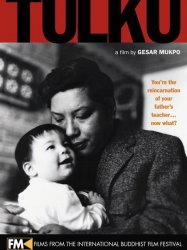
Tulku (2012)
, 1h15Directed by Gesar Mukpo
Origin Canada
Genres Documentary
Themes Films about religion, Films about Tibet, Documentaire sur une personnalité, Documentary films about religion, Films about Buddhism
Actors Gesar Mukpo
Gesar Mukpo begins by interviewing a fellow Canadian, Dylan Henderson, who was the first Caucasian tulku discovered in the West, recognized in 1975 by Chögyam Trungpa Rinpoche as the incarnation of one of his teachers. The identification was confirmed by Rangjung Rigpe Dorje, the 16th Karmapa, who requested that Henderson come to the Rumtek Monastery in India for the rest of his life. Chögyam Trungpa, however, recommended that he remain in the West. Henderson maintains his Buddhist studies and practices, but without the form and structure present in the East. He has a degree in anthropology and history.
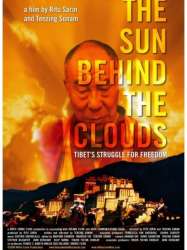 , 1h19
, 1h19Directed by Ritu Sarin, Tenzing Sonam
Origin Inde
Genres Documentary
Themes Films about writers, Films about religion, Films about Tibet, Documentary films about politics, Documentary films about religion, Political films, Films about Buddhism

Tibet in Song (2009)
, 1h26Origin Inde
Genres Documentary
Themes Films about music and musicians, Films about Tibet, Documentary films about music and musicians
Tibet in Song tells the story of Ngawang Choephel, a Tibetan exile and former Fulbright scholar at Middlebury College, who returns to Tibet in 1995 to videotape traditional music and dance. The films follows his travels throughout the country recording music and understanding the impact of Chinese communist rule on Tibetan culture and everyday life. The movie contends that the Chinese authorities re-purposed traditional Tibetan music to forward their own agenda and propaganda.
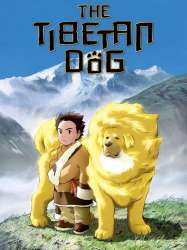
Tibetan Dog (2011)
, 1h35Directed by Masayuki Kojima
Origin Japon
Genres Animation
Themes Films about Tibet
Actors Hiroshi Iwasaki, Claire Tefnin, Norio Wakamoto, Frédéric Meaux, Fanny Roy, Carole Baillien
Après la mort de sa mère, Tenzin décide de quitter la ville et d'aller vivre avec son père dans la prairie tibétaine. La vie est rude, adaptation à la vie nomade, familiarisation avec sa nouvelle famille et son nouvel environnement.
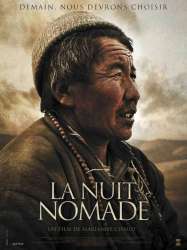
La Nuit Nomade (2012)
, 1h25Directed by Marianne Chaud
Origin France
Genres Drama, Documentary
Themes Films about Tibet
Le film décrit les difficultés d'une petite communauté de bergers élevant des yaks, des chèvres et des chevaux sur les hauts plateaux de Kharnak , dans le sud-est du Ladakh, évoquant la douleur de la vie à 4 500 m d'altitude, pour moitié dans un hiver glacial, luttant pour préserver les animaux des loups et de la famine.

Demon of the Himalayas (1935)
Directed by Andrew Marton
Genres Adventure
Themes Sports films, Films about Tibet
Actors Gustav Diessl
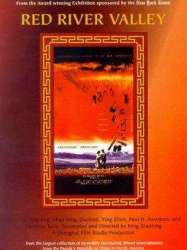
Red River Valley (1997)
, 1h55Directed by Feng Xiaoning
Genres Drama, War, Historical, Romance
Themes Films about Tibet
Actors Shao Bing
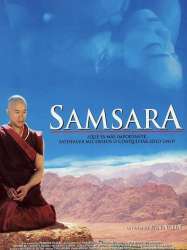
Samsara (2002)
, 2h25Origin German
Genres Drama, Adventure, Romance
Themes Films about religion, Films about Tibet, Films about Buddhism
Actors Shawn Ku, Christy Chung, Jampa Kalsang Tamang
Tashi (Shawn Ku) began his training as a Buddhist monk at the age of five. Twenty years later, he emerges from a three year solitary meditation, for which he is awarded the degree of khenpo by the rinpoche. When Tashi begins to have wet dreams his relationships at the temple become strained. On an official visit, he stays with a farmer and meets Pema, the farmer's daughter. He leaves monastic life, returning to the farm, where he joins the migrant workers for the harvest. After another encounter with Pema, they marry. They later have a son, Karma(Tenzin Tashi).
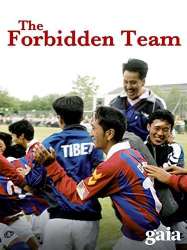
The Forbidden Team (2003)
Origin Danemark
Genres Documentary
Themes Films about religion, Sports films, Films about Tibet, Documentary films about sports, Association football films, Documentary films about religion, Films about Buddhism
The documentary film was shot at the preamble to the football international match of June 30, 2000, between Tibet and Greenland. For the Tibetans in exile this was the first international match after many decades since the former national team had broke up.

What Remains of Us (2004)
, 1h17Directed by Hugo Latulippe, Françoise Prévost
Origin Canada
Genres Documentary
Themes Films about writers, Politique, Films about religion, Films about Tibet, Documentary films about politics, Documentary films about religion, Political films, Films about Buddhism
A young Tibetan from Québec, Canada, enters her homeland for the first time — carrying a clandestine video message from the Dalai Lama to Tibetans inside Tibet.
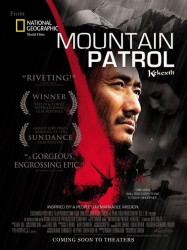
Mountain Patrol (2004)
, 1h30Directed by Lu Chuan
Origin Hong kong
Genres Drama, Action, Adventure
Themes Films about Tibet
The film opens with the summary execution of a patrol member by poachers and then follows, in quasi-documentary style, reporter Ga Yu (played by Zhang Lei) who is sent from Beijing to investigate. In Kekexili he meets Ritai (played by Tibetan actor Tobgyal, or Duo Bujie (多布杰) in Mandarin) at the Sky burial of the deceased patrol member. Ritai is the leader of the vigilantes who, despite poverty and the lack of any government support, roam the land to protect the endangered Tibetan antelope from extinction. Admitted into the patrol, Ga becomes a sort of embedded journalist in the hunt for the poachers across Kekexili.

Koi Tujh Sa Kahan (2005)
, 2h43Directed by Reema Khan
Origin Pakistan
Themes Films about Tibet
Actors Reema Khan, Moammar Rana, Veena Malik, Babrik Shah, Simran, Nadeem Baig
Koi Tujh Sa Kahan revolves around a loving husband and wife. Bella (Reema Khan) has been flying in Helicopter for come to PEERU HOTEL at Singapore for Peeru's Birthday Celebration. When she reach at Hotel, Media and guest all ready came there, But They Were Shocked because Peeru (Moammar Rana) was not with her.

Blindsight (2006)
, 1h44Origin United-kingdom
Genres Documentary
Themes Films about children, Films about religion, Sports films, Films about Tibet, Documentary films about sports, Documentaire sur une personnalité, Documentary films about religion, Films about disabilities, Films about Buddhism
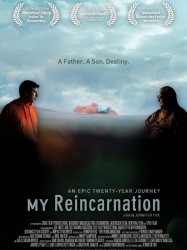
My Reincarnation (2011)
Directed by Jennifer Fox
Genres Documentary
Themes Films about religion, Films about Tibet, Documentary films about religion, Films about Buddhism
When Namkhai Norbu Rinpoche escaped Tibet in 1959, he settled in Italy, where he married and had two children, of which Yeshi was the first. Yeshi was recognized as the reincarnation of Rinpoche’s uncle, a renowned Dzogchen master, who had died after the Chinese invaded Tibet. Yeshi grew up in Italy and wanted nothing to do with this legacy. He had no interest in being a teacher like his father. Nor did he want to return to Tibet and the monastery of Rinpoche’s uncle to meet the students waiting for him since his birth – something that his father continually admonished him to do. Instead, he dreamed of a normal life, away from the hordes of devoted students that always surrounded his father.
 Connection
Connection